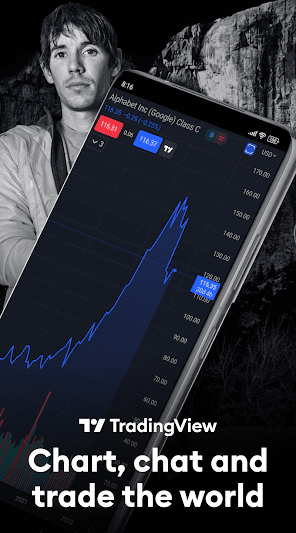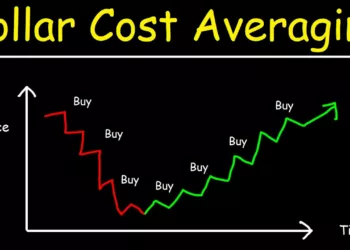In the world of finance, quantitative trading has emerged as a powerful approach to making data-driven investment decisions. This advanced trading strategy leverages mathematical models, statistical analysis, and computer algorithms to identify profitable opportunities in the market. If you’re a beginner looking to dive into the exciting realm of quantitative trading, this comprehensive guide will provide you with the essential knowledge and insights to get started on the right foot.
What is Quantitative Trading?
Quantitative trading, also known as quant trading, is a trading approach that relies on mathematical and statistical models to analyze financial markets and make investment decisions. Unlike traditional trading methods that heavily depend on human intuition and fundamental analysis, quantitative trading utilizes complex algorithms and data-driven strategies to identify profitable trading opportunities.
Quantitative traders, or quants, employ various techniques such as:
- Statistical arbitrage
- Algorithmic trading
- High-frequency trading
- Machine learning
These techniques enable quants to process vast amounts of market data, identify patterns, and execute trades with speed and precision.
The Advantages of Quantitative Trading
Quantitative trading offers several key advantages over traditional trading approaches:
- Data-Driven Decision Making: Quant trading relies on objective data analysis rather than subjective human judgment, reducing the impact of emotional biases on investment decisions.
- Backtesting Capabilities: Quantitative models can be backtested on historical data to assess their performance and optimize trading strategies before deploying them in live markets.
- Scalability: Automated trading algorithms can execute a large number of trades simultaneously, allowing quants to capitalize on fleeting market opportunities.
- Risk Management: Quantitative models can incorporate risk management techniques, such as portfolio optimization and position sizing, to mitigate potential losses.
Key Components of Quantitative Trading
To embark on your quantitative trading journey, it’s essential to understand the key components that make up a successful quant trading system:
1. Data Collection and Preprocessing
The foundation of quantitative trading lies in the quality and quantity of data. Quants collect and preprocess vast amounts of financial data, including:
- Historical price data
- Fundamental data (e.g., earnings reports, economic indicators)
- Alternative data (e.g., sentiment analysis, satellite imagery)
Data preprocessing involves cleaning, normalizing, and transforming raw data into a format suitable for analysis. This step is crucial to ensure the accuracy and reliability of the data used in the quantitative models.
For example, quants may collect historical price data for a particular stock and preprocess it by removing any missing or erroneous values, adjusting for stock splits or dividends, and normalizing the data to a common scale. This preprocessed data can then be used as input for the quantitative models.
2. Model Development
At the heart of quantitative trading are mathematical and statistical models. These models are designed to identify profitable trading opportunities based on patterns and relationships in the data. Common modeling techniques include:
- Linear regression
- Time series analysis
- Machine learning algorithms (e.g., neural networks, support vector machines)
Quants develop and refine these models through an iterative process of backtesting and optimization. They may start with a simple model, such as a linear regression, to identify the relationship between a stock’s price and various factors like trading volume, market sentiment, or economic indicators. As they gain insights from the initial model, quants can incorporate more advanced techniques, such as machine learning algorithms, to capture complex patterns and improve the model’s predictive power.
For instance, a quant may develop a machine learning model that analyzes historical price data, trading volume, and social media sentiment to predict the future price movements of a particular stock. The model can be trained on a large dataset of historical data and then tested on out-of-sample data to evaluate its performance.
3. Backtesting and Optimization
Backtesting involves simulating a trading strategy on historical data to assess its performance. By analyzing the results of backtesting, quants can evaluate the effectiveness of their models and identify areas for improvement.
Optimization techniques, such as grid search or genetic algorithms, are used to fine-tune the parameters of the trading models to maximize their performance. These techniques involve systematically varying the model’s parameters and evaluating the resulting performance to identify the optimal configuration.
For example, a quant may backtest a trading strategy that buys a stock when its price crosses above its 50-day moving average and sells when it crosses below. By simulating this strategy on historical data, the quant can assess its profitability, risk profile, and other performance metrics. If the results are promising, the quant can proceed to optimize the strategy by experimenting with different moving average periods or incorporating additional factors into the trading rules.
4. Execution and Risk Management
Once a quantitative trading model has been developed and tested, it’s time to deploy it in live markets. Automated trading systems execute trades based on the model’s signals, ensuring speed and accuracy.
Risk management is a crucial aspect of quantitative trading. Quants employ various risk management techniques, such as:
- Position sizing
- Stop-loss orders
- Diversification
These techniques help to mitigate potential losses and ensure the long-term sustainability of the trading strategy. For instance, a quant may implement a position sizing algorithm that determines the optimal amount to invest in each trade based on the model’s confidence level and the account’s risk tolerance. Additionally, stop-loss orders can be used to automatically exit a trade if the market moves against the position, limiting potential losses.
Example of a Quantitative Trade
To illustrate the concept of quantitative trading, let’s consider a simple example of a mean-reversion trading strategy.
Suppose a quant has developed a model that identifies stocks that have deviated significantly from their historical average price. The model assumes that prices tend to revert to their mean over time, presenting a potential trading opportunity.
The quant’s model analyzes the historical price data of a particular stock, XYZ, and calculates its 20-day moving average. When the stock’s price deviates more than two standard deviations above or below the moving average, the model generates a trading signal.
If the stock’s price is more than two standard deviations above the moving average, the model generates a sell signal, indicating that the stock is overvalued and likely to revert to its mean. Conversely, if the price is more than two standard deviations below the moving average, the model generates a buy signal, suggesting that the stock is undervalued and poised for a price increase.
The quant’s automated trading system receives the trading signals from the model and executes the trades accordingly. If a sell signal is generated, the system checks if the quant holds a position in XYZ stock and sells the shares at the current market price. If a buy signal is generated, the system checks if there is sufficient capital available and purchases shares of XYZ stock.
To manage risk, the quant incorporates a stop-loss order for each trade. If the stock’s price moves against the position by a predetermined amount, the stop-loss order is triggered, and the trade is automatically closed to limit potential losses.
By backtesting this mean-reversion strategy on historical data, the quant can evaluate its performance, assess the risk-reward profile, and optimize the model’s parameters, such as the moving average period or the standard deviation threshold.
This example demonstrates how quantitative trading combines data analysis, mathematical modeling, and automated execution to identify and capitalize on profitable trading opportunities in the market.
Getting Started with Quantitative Trading
If you’re ready to embark on your quantitative trading journey, here are some steps to get started:
- Educate Yourself: Gain a solid understanding of financial markets, trading concepts, and programming languages commonly used in quant trading, such as Python and R. Familiarize yourself with statistical concepts, such as probability distributions, hypothesis testing, and regression analysis.
- Develop Your Skills: Practice coding, data analysis, and model development through online courses, tutorials, and projects. Platforms like Coursera, edX, and Udacity offer courses on quantitative finance, machine learning, and algorithmic trading. Engage in coding challenges and participate in online communities to hone your skills.
- Acquire Data: Obtain historical and real-time financial data from reliable sources, such as Bloomberg, Thomson Reuters, or QuantConnect. Many data providers offer APIs or downloadable datasets that you can use for backtesting and model development. Open-source platforms like Yahoo Finance and Google Finance also provide free access to historical price data.
- Start Small: Begin by developing and testing simple trading strategies on historical data before gradually increasing the complexity of your models. Focus on understanding the underlying concepts and building a solid foundation before attempting more advanced strategies.
- Collaborate and Learn: Engage with the quantitative trading community through forums, workshops, and conferences to exchange ideas and learn from experienced professionals. Join online communities, such as Quantopian, QuantConnect, and Numerai, where you can collaborate with other quants, participate in coding competitions, and access educational resources.
Challenges and Considerations
While quantitative trading offers exciting opportunities, it’s important to be aware of the challenges and considerations involved:
- Market Efficiency: As more quants enter the market, profitable trading opportunities become harder to identify and exploit. The increasing competition among quantitative traders can lead to diminishing returns and the need for more sophisticated strategies.
- Model Decay: Quantitative models may lose their effectiveness over time as market conditions change, requiring continuous monitoring and updating. Models that performed well in the past may not necessarily remain profitable in the future, emphasizing the importance of regular model validation and refinement.
- Regulatory Compliance: Quant traders must adhere to regulatory requirements and ensure their trading activities comply with applicable laws and regulations. This includes considerations such as market manipulation, insider trading, and fair dealing. Staying informed about regulatory changes and maintaining proper documentation and risk controls are essential.
- Technological Infrastructure: Quantitative trading requires robust technological infrastructure, including high-speed data feeds, powerful computing resources, and reliable trading platforms. Quants need to invest in hardware and software that can handle the demands of real-time data processing, algorithmic execution, and risk management.
- Emotional Discipline: Although quantitative trading relies heavily on mathematical models and automation, emotional discipline remains crucial. Quants must have the ability to stick to their strategies, even during periods of market volatility or short-term losses. Overriding the models based on emotional impulses can lead to suboptimal decisions and increased risk.
Bottom Line
Quantitative trading represents a fascinating intersection of finance, mathematics, and technology. By leveraging data-driven insights and advanced modeling techniques, quants seek to navigate the complex world of financial markets and generate profitable returns.
As a beginner, the journey into quantitative trading may seem daunting, but with dedication, continuous learning, and a disciplined approach, you can develop the skills and knowledge necessary to succeed in this exciting field.
Remember, quantitative trading is not a get-rich-quick scheme, but rather a systematic and disciplined approach to investing. By staying curious, adapting to market conditions, and continuously refining your strategies, you can unlock the potential of quantitative trading and pave the way for a successful career in finance.
| Concept | Description |
|---|---|
| Statistical Arbitrage | Exploiting pricing inefficiencies between related securities |
| Algorithmic Trading | Using computer programs to execute trades based on predefined rules |
| High-Frequency Trading | Executing a large number of trades in fractions of a second |
| Machine Learning | Utilizing algorithms that learn from data to make predictions or decisions |

“In the world of investing, the only thing that’s constant is change. Quantitative trading allows us to adapt to these changes and find new opportunities in the market.” – Anonymous Quant Trader
For more information on quantitative trading and to explore advanced concepts, we recommend the following resources:
- QuantStart: A comprehensive resource for learning quantitative trading, offering tutorials, articles, and a community forum.
- QuantConnect: A platform that provides data, backtesting tools, and a vibrant community for developing and deploying quantitative trading strategies.
- Quantopian: An online platform for learning, developing, and backtesting quantitative trading algorithms using Python.
Embark on your quantitative trading journey today and unlock the power of data-driven investing!
For more content, check out Unleashing the Power of AI in Stock Trading: A Positive Outlook on Transformative Trends.
Disclaimer:
The content provided in this blog post is for informational and educational purposes only. The information and strategies discussed are based on the author’s research, experience, and understanding of quantitative trading. However, the author and the website hosting this content do not guarantee the accuracy, completeness, or reliability of the information presented.
Quantitative trading involves substantial risk, and past performance does not guarantee future results. The strategies and examples mentioned in this blog post may not be suitable for all individuals or market conditions. Readers should conduct their own due diligence, seek professional advice, and carefully consider their financial situation, risk tolerance, and investment objectives before engaging in quantitative trading or implementing any of the strategies discussed.
The author and the website hosting this content shall not be held liable for any losses, damages, or financial consequences resulting from the use or misuse of the information provided. Trading in financial markets carries inherent risks, and readers are solely responsible for their investment decisions and any potential losses incurred.
The examples and simulations presented in this blog post are for illustrative purposes only and do not constitute a recommendation to buy, sell, or hold any specific securities or financial instruments. The author and the website hosting this content do not provide personalized investment advice, and readers should not construe any information as such.
External links and resources mentioned in this blog post are provided for informational purposes only, and the author and the website hosting this content do not endorse, guarantee, or take responsibility for the accuracy, completeness, or reliability of the content found on those external websites.
By reading this blog post and implementing any of the strategies or ideas discussed, readers acknowledge that they understand and accept the risks involved in quantitative trading and agree to assume full responsibility for their actions and any resulting consequences.

















































Somebody essentially lend a hand to make significantly posts I might state That is the very first time I frequented your web page and up to now I surprised with the research you made to create this particular put up amazing Excellent job